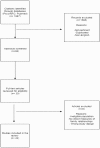The Role of Family Relationships in Eating Disorders in Adolescents: A Narrative Review
- PMID: 32252365
- PMCID: PMC7226005
- DOI: 10.3390/bs10040071
The Role of Family Relationships in Eating Disorders in Adolescents: A Narrative Review
Abstract
Background: Adolescents' eating disorders have been explored through various conceptual and empirical models. Only recently, scientific literature in this area has more specifically investigated the role of relationships, with particular attention to family functioning. Objective: This paper reviews family relationships aspects of eating disorders in adolescence. Methods: A narrative literature review of relational issues in adolescents' eating disorders was performed. Results: Empirical evidence of family relationships in adolescents' eating disorders confirms the relevance of relational aspects in the development and maintenance of the pathology. In particular, the contribution of the relational-systemic approach is wide, suggesting the need to refer to the family context for a better understanding of adolescents' sufferance. Additionally, the empirical contributions from the conceptual model of Developmental Psychopathology, highlighting the importance of risk and protection factors in family relationships, provides knowledge about the phenomenon of adolescents' eating disorders in terms of complexity. Conclusions: An integrated relational model aimed to explore adolescents' eating disorders is worthy of investigation to accomplish specific program of intervention.
Keywords: adolescence; eating disorders; family functioning; family relationships; parental risk.
Conflict of interest statement
The authors declare no conflict of interest
Similar articles
-
Associations among relationship status, gender, and sexual attraction in Australian adolescents' eating pathology.Int J Eat Disord. 2023 Mar;56(3):551-561. doi: 10.1002/eat.23861. Epub 2022 Nov 24. Int J Eat Disord. 2023. PMID: 36420932
-
The influence of peers' and siblings' on children's and adolescents' healthy eating behavior. A systematic literature review.Appetite. 2020 May 1;148:104592. doi: 10.1016/j.appet.2020.104592. Epub 2020 Jan 9. Appetite. 2020. PMID: 31927070
-
Weighing in on the issue: a longitudinal analysis of the influence of selected individual factors and the sports context on the developmental trajectories of eating pathology among adolescents.J Youth Adolesc. 2013 Jan;42(1):33-51. doi: 10.1007/s10964-012-9844-x. Epub 2012 Oct 31. J Youth Adolesc. 2013. PMID: 23111843
-
Moderating effects of family environment on overweight/obese adolescents' dietary behaviours.Appetite. 2019 Mar 1;134:69-77. doi: 10.1016/j.appet.2018.12.034. Epub 2018 Dec 24. Appetite. 2019. PMID: 30590079
-
Adolescents' experiences of living with sickle cell disease: An integrative narrative review of the literature.Int J Nurs Stud. 2018 Apr;80:20-28. doi: 10.1016/j.ijnurstu.2017.12.008. Epub 2017 Dec 27. Int J Nurs Stud. 2018. PMID: 29353708 Review.
Cited by
-
Knowledge of breastfeeding practice and associated factors among fathers whose wife delivered in last one year in Gurage Zone, Ethiopia.PLoS One. 2021 Jul 19;16(7):e0254824. doi: 10.1371/journal.pone.0254824. eCollection 2021. PLoS One. 2021. PMID: 34280223 Free PMC article.
-
An (un)answered cry for help: a qualitative study exploring the subjective meaning of eating disorders in the context of transgenerational trauma.J Eat Disord. 2025 Jan 9;13(1):4. doi: 10.1186/s40337-024-01177-8. J Eat Disord. 2025. PMID: 39789656 Free PMC article.
-
Relationship between parental perfectionism and child's disordered eating: mediating role of parental distress and validation of the arabic version of the eating disorders examination questionnaire-short-parent version (EDE-QS-P).BMC Psychiatry. 2025 Feb 14;25(1):127. doi: 10.1186/s12888-025-06589-7. BMC Psychiatry. 2025. PMID: 39953458 Free PMC article.
-
Asian students in the anglosphere - unravelling the unique familial pressures contributing to eating pathology: a systematic review.J Eat Disord. 2023 Jan 10;11(1):4. doi: 10.1186/s40337-023-00733-y. J Eat Disord. 2023. PMID: 36627676 Free PMC article. Review.
-
[Prevalence and factors associated with eating disorders in Peruvian Human Medicine students in the context of the COVID-19 pandemic: a multicentre study].Rev Colomb Psiquiatr. 2022 Aug 9. doi: 10.1016/j.rcp.2022.07.005. Online ahead of print. Rev Colomb Psiquiatr. 2022. PMID: 35967544 Free PMC article. Spanish.
References
-
- Lask B., Bryant-Waugh R. Eating Disorders in Childhood and Adolescence. Routledge; Abingdon, UK: 2013.
-
- Sigel E. Eating Disorders. Adolesc. Med. State Art Rev. 2008;19:547–572. - PubMed
-
- Treasure J., Schmidt U., Van Furth E. Handbook of Eating Disorders. John Wiley & Sons; Hoboken, NJ, USA: 2003.
Publication types
LinkOut - more resources
Full Text Sources


